It was as if by divine predisposition, we made our way to the ancient and sacred Ernakulam Shiva temple, while in Kochi to attend the Kerala Travel Mart 2024. Our flight back home was in the late afternoon, and we had some time during which we paid a visit to the fascinating Hill Palace Museum and the Ernakulam Shiva Temple.
Shiva temples exude an enigmatic sanctity and a profound spiritual resonance. The proximity of the Ernakulam Shiva Temple to our hotel in Kochi naturally beckoned us, compelling a visit drawn by its quiet magnetism. So it was, that we found ourselves in the sacred and hallowed surroundings of the Ernakulam Mahadeva Temple, popularly known as Ernakulam Shiva Temple.
Table of Contents
Ernakulam Mahadeva Temple – Ancient Shiva Temple
The serene Ernakulam Shiva temple is dedicated to the protector deity of the city, known as Ernakulathappa, a form of Lord Shiva. The temple stands like an oasis of tranquillity amid a bustling city, a reminder to its residents scurrying past of their historical roots. The temple stands in serene somnolence, not far from the backwaters of Ernakulam and from where the waves of the Arabian Sea rise in benediction. The temple radiates a spiritual aura that calms the mind and turns it inwards, transcending the hustle and bustle outside. We spent some moments in calm contemplation as we circumambulated the temple and had a glimpse of Lord Ernakuathappan before the temple closed for the afternoon.
Ernakulam Shiva Temple – Legend Of Kirata And Arjuna
The Ernakulathappa Temple is associated with many fascinating legends that connect it to the Dwapara Yuga and the Mahabharata. According to legend, the Ernakulam Shiva Temple is associated with the Mahabharata, specifically the incident involving Arjuna’s encounter with Shiva. In the Mahabharata, Arjuna undertook intense penance to please Lord Shiva, seeking divine weapons for the impending war.
Pleased by his devotion, Shiva appeared in disguise as a Kirata (hunter) and engaged him in combat over a wild boar. After testing Arjuna’s valour, Shiva revealed his true form and granted him the powerful Pashupatastra. Arjuna is believed to have made a Shiva Linga and worshipped it, and it was that Shiva Linga which was centuries later worshipped by Devalan, a disciple of Kulamuni.
Ernakulam Shiva Temple – Legend of Devalan And Rishinagakulam
The origins of the temple are steeped in the mystic tales of the Dvapara Yuga. Sage Kulamuni, a hermit of great austerity, was performing penance in the Himalayas with his disciples. he had a devoted disciple named Devalan. In an incident that reveals both valour and compassion, Devalan killed a snake with a vine to protect his fellow disciples, only to be cursed by his master, Kulamuni, to become a serpent-headed, human-bodied being. Upon pleading for redemption, the Sage Kulamuni relented and instructed him to take a Shiva Linga from beneath an Elanji tree, travel south, and perform worship wherever the idol got rooted—there he would be freed of the curse.
Devalan, transformed into Nag Rishi, journeyed south with the Linga. Upon reaching Ernakulam, he placed the idol under a tree, bathed in a pond nearby, and began worship. Locals spotted this terrifying being in prayer and gathered others to confront it. Trying to flee, Nag Rishi found the Shiva Linga had rooted itself there. He bowed before it and was freed from his curse. The local chieftain Thoosathu Kaimal was informed and constructed a temple on the very spot—the present-day renowned Ernakulam Shiva Temple.
In Ernakulam, the name Ernakulathappan is uttered not merely in prayer, but in every breath. So entwined is the identity of the city with its guardian deity that the very etymology of Ernakulam is traced to Iraiyanar Kulam—the pond of Shiva (Iraiyanar). The sacred pond still exists and is known as Rishinagakulam. Over time, this sacred locale evolved into the vibrant urban centre we know today as Ernakulam; however, the soul of the place remains anchored in the timeless sanctity of the ancient temple.
Ernakulam Mahadeva Temple History | History Of Ernakulathappan Shiva Temple
The temple’s history is intricately interwoven with the legacy of the city itself, and it is one of the seven royal temples of the Kochi Maharajas. The present structure was erected in 1846 under the devoted patronage of Diwan Sri Edakkunni Sankara Warrier.
The earliest known reference to the Ernakulam Shiva Temple appears in the ancient corpus of Sangam literature, where it is revered as one of the principal sanctuaries under the dominion of the Chera dynasty. The Cheras were devout adherents of Lord Shiva, and this temple held a place of prominence in their spiritual and cultural landscape. Following the decline of the Chera rule, the region came under the stewardship of a few Nair nobles, who renamed it Ernakulam—a vernacular evolution of the original term Eere Naal Kulam, meaning “the pond that never dries”—a tribute to the temple’s sacred and perennial water tank.
In time, the area was absorbed into the Kingdom of Kochi. With the Dutch siege of Fort Kochi in the 17th century, the royal seat was shifted to Ernakulam. The Kochi Rulers established a new palace near the temple, facing its venerated pond—a structure later known as the Tank Shed Palace, still visible behind today’s Durbar Hall. This relocation significantly elevated the temple’s stature, as it came under the direct patronage of the royal court. In recognition of its growing spiritual and civic importance, the temple deity was consecrated as the Nagara Devata—the guardian deity of the city of Ernakulam.
Inside Ernakulam Shiva Temple – Simple But Divine Architecture
As compared the the architectural and ornate grandeur that one associates with South Indian temples, the Ernakulam Shiva Temple is marked by austere elegance. As we crossed the threshold of the temple, we were immediately struck by an overwhelming sense of spaciousness and a serene harmony with the elements—sky, air, and silence. The shrine stood at the heart of a vast open courtyard, its form simple yet dignified, embodying the essence of traditional Kerala temple architecture.
The temple is flanked by gopurams on both its eastern and western sides. Nearby, the Marine Drive Road gently curves past, offering a glimpse into the temple’s sacred expanse. On the eastern side stands an elegant entrance pavilion, inscribed with the temple’s name, situated approximately a hundred meters from the main tower. Within this gateway lies a designated space for vehicle parking.
The western gopuram, though architecturally understated, exudes quiet grandeur. Passing through it, one first encounters the anakkottil, a spacious elephant shelter capable of accommodating five elephants. Just beyond rises the gleaming golden flagmast, soaring nearly 70 feet into the air. It leads to the Balikkalpura—the offering hall—which houses a large balikkal or sacrificial stone. Remarkably, this sacred stone does not impede the devotee’s line of sight to the sanctum. The inner walls here are adorned with fine carvings of Brahma and the Ashtadikpalas, the eight celestial guardians, each rendered with exquisite detail.
In the north-eastern corner of the temple complex stands a distinct sanctum dedicated to Lord Ayyappa, oriented westward. The shrine follows traditional architectural norms and enshrines a graceful idol of the deity. Nearby lies a sacred grove-like enclosure devoted to the serpent deities, where Vasuki, the king of serpents, is worshipped alongside Nagayakshi, Nagakanyaka, and Nagachamundi.
Beyond the compound wall, to the northeast, lies the Rishinagakulam—a revered temple tank steeped in legend. It is believed that Nag Rishi performed his ritual ablutions here before worshipping Lord Shiva, and it is to this very pond that the deity is ceremonially brought for the Aarattu (holy bath) after the conclusion of the Ernakulam Shiva Temple’s annual festival.
The eastern gateway of the temple remains sealed today, though architectural indicators suggest that the original orientation of the deity’s darshan was eastward. According to tradition, the deity’s immense spiritual energy once caused repeated outbreaks of fire on the eastern side. To contain this intense force, the sage Vilwamangalam Swamiyar is said to have redirected the deity westward. Interestingly, Parvati, consort of Shiva and ever-present in the sanctum, is still believed to face east, retaining the original divine alignment.
Murugan Temple Near Ernakulam Shiva Temple
To the north of the temple compound, adjacent to the Ernakulathappan Hall, stands a Tamil-style temple dedicated to Lord Subrahmanya. This shrine was commissioned by Venkataswamy, a Tamil Brahmin who served as the Diwan of Cochin, in response to an appeal from the local Tamil Brahmin community.
Although situated close to the Ernakulathappan Temple, it functions as an independent place of worship, adhering strictly to Tamil traditions in both architectural design and ritual practice. The presiding deity, Lord Subrahmanya, is enshrined facing east and is flanked by a pantheon of sub-deities, including Ganesha, Dakshinamurthy, Mahavishnu, and Durga. The temple reflects the cultural identity and devotional heritage of the Tamil-speaking community of Kochi, preserving their distinct spiritual customs within the city’s sacred landscape.
Hanuman Temple Near Ernakulam Shiva Temple
To the north of the eastern gopuram stands a modest yet spiritually significant Kannada-style temple dedicated to Lord Hanuman. Beside it rises a revered Araalmaram (Peepal tree), considered sacred in Hindu tradition as the living embodiment of the Trimurtis—with Brahma dwelling at the top, Vishnu in the middle, and Shiva at the base. Circumambulating this sacred tree seven times is believed to bestow spiritual merit and blessings.
This Hanuman temple was constructed by Diwan Venkatarama, fulfilling the devotional aspirations of the Tulu Madhwa Brahmin community of Ernakulam. It follows the Kannada Madhwa tradition and stands out as a rarity among Madhwa temples in that it does not enshrine Lord Krishna as the principal deity. Instead, Lord Hanuman, facing west, is the presiding deity, accompanied by sub-deities such as Lord Rama and the serpent gods.
Though located near the Ernakulathappan Temple, this shrine operates as an independent temple, maintaining its distinct lineage of worship and ritual customs, much like the adjacent Murugan temple.
Ernakulam Shiva Temple – The Sanctum Sanctorum Of Ernakulathappan Temple
The sanctum sanctorum (Sreekovil) of the Ernakulam Shiva Temple, presided over by the deity Ernakulathappan, is a spacious, circular structure measuring approximately 100 feet in circumference. Crowned with a copper-clad roof and a resplendent golden finial, the sanctum comprises three chambers, with the innermost, the garbhagriha, enshrining a Shiva Linga approximately 2.5 feet in height, facing west. The Linga is customarily adorned with sacred garlands of Koovalam leaves, Thumba blossoms, and Rudraksha beads—offerings held dear to Lord Shiva. In this form, Ernakulathappan is venerated as the very embodiment of the primordial cosmic radiance, the source of all creation and dissolution.
Encircling the Sreekovil is the nalambalam, an inner cloistered corridor that, despite its modest dimensions, allows devotees to perform pradakshina (circumambulation) with ease and reverence. Access is granted through entrances on the eastern and southern sides—the latter primarily serving ritual purposes, including homa (sacred fire offerings).
Directly to the north of the main sanctum resides the formidable Kirata Murti, a fierce manifestation of Lord Shiva, who, in the guise of a hunter, tested Arjuna’s devotion and valour before bestowing upon him the divine Pashupatastra. This powerful form of Shiva is accorded equal sanctity and veneration.
In the south-eastern corner stands the Thidappalli, the temple’s traditional kitchen, while the northeast contains a sacred well used for ritual purposes. Occupying the southwestern corner is a shrine dedicated to Lord Ganesha, enshrined facing east, in keeping with customary temple orientation.
Surrounding the Sreekovil are sacred balivattams—consecrated stones symbolizing various divine manifestations. These include the Ashtadikpalas (guardians of the eight directions: Varuna, Vayu, Kubera, Ishana, Indra, Agni, Yama, and Nirriti), the Sapta Matrikas (seven divine mothers), Veerabhadra, Ganapati, Shasta, Subrahmanya, Brahma, Ananta, Durga, and Chandikeswara, who is reverently known here as Nirmalyadhari. During the sheeveli processions, offerings are made at these sacred points. These stones are not mere markers—they are revered as embodiments of divine energy, and as such, must never be stepped on or touched casually.
Directly in front of the sanctum stands the Namaskara Mandapam—a modest, square, four-pillared hall with a copper-clad roof and an ornate golden finial. The ceilings and pillars are adorned with intricate carvings of Brahma, the Ashtadikpalas, and other celestial beings. On its eastern side sits the sculpture of Nandi, the devoted mount of Lord Shiva. It is a common and touching sight to see devotees lean close, whispering their heartfelt wishes into Nandi’s ears, trusting that he will carry their prayers directly to the Lord.
Ernakulam Shiva Temple Timings And Other Important Information | Ernakulathappan Temple timings
If you are looking to have darshan of Lord Ernaklathappa when in Kochi, take note of the temple timings as well as the Pooja timings of the Ernakulam Shiva Temple. It opens quite early at 3:30 AM and closes at 8.00 PM. Here are the detailed timings for your reference. These timings are current as per the information provided by the Cochin Devaswom Board. However, do check for any changes before planning your visit.
Ernakulam Shiva Temple Timings For Darshan | Ernakulam Shiva Temple Opening and Closing Time:
The Ernakulam Shiva Temple is typically open from 3:30 AM to 11:00 AM and from 4:00 PM to 8:00 PM, as per information available on temple directories.
- Morning Darshan: 3:30 AM – 11:00 AM
- Midday Break: 11:00 AM – 4:00 PM
- Evening Darshan: 4:00 PM – 8:00 PM
Ernakulam Shiva Temple Daily Pooja Schedule:
Nadathurakkal: 3:30 AM
Nirmalyam: 4:00 AM
Abhishekam: 4:15 – 4:30 AM
Ushapooja Nada Thurakkal: 5:00 AM
1001 Kudam Abhishekam: 5:00 AM to 6:45 AM
Ethirtha Pooja Nadathurakkal: 7:00 AM
Ethirtha Sheeveli (procession): 7:15 AM
Pantheeradi Pooja: 7:30 – 8:15 AM
Uchcha Pooja Sheeveli: 9:30 AM – 11:00 AM
Nadathurakkal Vykunneram (Evening Opening): 4:00 PM
Deeparadhana: 6:30 PM ( At sunset )
Athaazha Pooja Nadathurakkal: ~7:30 PM
Thripuka Nadathurakkal (closing): 8:00 PM
Ernakulam Shiva Temple Dress Code
The Ernakulam Shiva Temple observes a modest dress code in line with traditional Hindu temple etiquette. Here are the typical guidelines:
For Men:
- Wear a mundu/dhoti (traditional white cotton wrap).
- Shirts and T-shirts are generally not allowed inside the sanctum area. Men are expected to remove their upper garments before entering the inner sanctum.
- A shawl or angavastram may be used if needed.
For Women:
- Sarees, salwar kameez, or long skirts with blouses are appropriate.
- Western outfits like jeans, shorts, and skirts above the knee are generally discouraged.
- Modest attire covering shoulders and legs is expected.
Other Points To Be Noted:
- Footwear must be removed before entering the temple premises.
- Mobile phones and cameras may be restricted inside sanctified areas.
It is always best to dress conservatively and respectfully when visiting sacred temples in Kerala, especially one as revered as the Ernakulam Shiva Temple.
Ernakulam Shiva Temple Festivals | Events
The Ernakulam Shiva Temple—revered as Ernakulathappan Kshetram—celebrates several important festivals and religious events with deep spiritual and cultural significance. Here are the most notable ones:
Annual Festival of Ernalulam Shiva Temple
The most important festival of the Ernakulam Shiva Temple is the annual festival or Utsavam that is spread over 8 days. The festival is marked by Kodiyattam or Flag Hoisting on the Thiruvathira Day of the month of Makara. The celebrations are marked by Sheeveli (traditional temple processions) with caparisoned elephants and temple music troupes. Cultural and musical programmes like Kathakali, and Nadaswaram also form part of the celebrations. Deeparadhana and other special poojas are also done during the annual festival, which concludes with the holy bath of the deity in the sacred pond, Rishinagakulam.
Celebration of Maha Shivratri
Being a Shiva temple, the festival of Maha Shivratri is celebrated with great devotion and enthusiasm at the Ernakulam Shiva Temple. The temple remains open through the night on Maha Shivratri, and the devotees take part in special poojas, including Rudrabhishekha and Bhajans.
Thiruvathira
Thiruvathira is a festival that commemorates the cosmic dance of Shiva, the Shiv Tandav, as well as the penance of Parvati. The festival is celebrated with women joining in a group dance known as Thirvathirakali. Special poojas are made to Lord Shiva and Parvati. On this day special prayers are offered by married women for marital harmony.
Pradosha Pooja
Pradosha pooja is a special pooja that is considered very auspicious, twice a month, on the 13th day of each Lunar fortnight, Lord Shiva is worshipped at dusk. This special pooja is conducted bimonthly at the Ernakulam Shiva Temple and includes Abhishekham and deepa aradhana.
Ernakulam Shiva Temple Photos
Explore the divine aura through this collage of Ernakulam Shiva Temple photos, capturing its serene beauty and spiritual essence.
Video Of Ernakulam Shiva Temple
Watch our video on Ernakulam Shiva Temple and the legend of Kirata.
How To Get To Ernakulam Shiva Temple
If you are planning a trip to Ernakulam Shiva Temple in Kochi, you can conveniently book a cheap flight through Air India (Domestic) or Air India (International), or Priceline right here. The Ernakulam Shiva Temple is located near the Marine Drive area of Ernakulam, in Kerala.
Address:
Ernakulam Shiva Temple Durbar Hall Road Marine Drive Ernakulam Kerala
- The Ernakulam Shiva Temple is about 30 kilometres from the Cochin International Airport
- Fort Kochi is about 12 kilometres from the Ernakulam Shiva Temple
- Ernakulam is at a distance of about 207 kilometres from Kerala’s capital, Thiruvananthapuram
- Ernakulam is at a distance of about 542 kilometres from Bangalore
Ernakulam Shiva Temple Contact Number:
04842369804, 9188958065
Where To Stay In Ernakulam
There are many options to stay in Kochi/Ernakulam for visiting the Ernakulam Shiva Temple. We stayed at the IMA House, which is just 6 kilometres from the historic temple. The hotel offers Deluxe and Executive Studio Apartments, which are spacious and comfortable, and is located in a good area. If you prefer to stay in Fort Kochi, the Forte Kochi, which is a heritage 5-star Hotel, is a great option. We have stayed there a couple of times.
You can book your stay in Kochi or elsewhere right here.
| Click to book your stay at Forte Kochi or other best hotels in Kochi |
|---|
Ernakulam Shiva Temple FAQ | Popular Queries About Shiva Temple in Ernakulam
Curious about the Ernakulam Shiva Temple? This FAQ covers the most popular queries to help you understand its history, significance, and visitor details.
Is photography and videography allowed inside the Ernakulam Shiva Temple?
Photography is restricted in the inner sanctum and during rituals. It’s best to check with temple staff for current rules.
Where is the Ernakulam Shiva temple located?
The temple is situated in the heart of Ernakulam, near the Marine Drive and Durbar Hall Ground, offering easy access from across Kochi city.
What are the temple’s opening hours?
- Morning: 3:30 AM – 11:00 AM
- Evening: 4:00 PM – 8:00 PM
Note: Timings may vary on festival days. Visitors are advised to arrive early for morning rituals.
Which are the other major shrines inside the Ernakulam Shiva Temple?
The temple complex has the following shrines:
- Kirata Murti (a fierce form of Shiva who tested Arjuna)
- Ayyappa shrine, Nagadevata shrine, and Ganapati shrine
- Nearby, independent temples for Subrahmanya (Murugan) and Hanuman, built in Tamil and Kannada styles, respectively.
Is there parking available at the temple?
Yes, vehicle parking is available just inside the eastern gateway, approximately 100 meters from the main sanctum.
As you leave the environs of the sacred Ernakulam Shiva Temple, your heart is filled with bliss, and your mind is calmed. The hustle and bustle of the city seems far away, and you feel as if your soul has been cleansed. The vision of Shiva and Parvati lingers in the mind, and the images of Kirata and Arjuna fleet past the screen of your mind.
We hope you found our blog post about the Ernakulam Shiva Temple illuminating and interesting. Do let us know if you have any questions or want to add any information about the temple that you may have. Subscribe to our blog for more of such content, and also connect with us on our social media handles.
Where Every Journey Begins and the Soul Finds Its Wings
Close your eyes. Picture sun-kissed shores sparkling like scattered stars, mist-wrapped mountains humming ancient secrets, and cities steeped in timeless tales. This isn’t just travel — it’s transformation. We do not just plan trips — we craft soulful journeys, like love letters to the world. From peaceful sanctuaries to hidden gems, every detail flows to the rhythm of you.
Let your wanderlust take flight. Write to us at [email protected] — your next unforgettable escape begins here.
Moments That Matter, Not Just Miles
A journey doesn’t start at the airport — it starts with a spark. Join our world of curated travel stories: secret hideaways, soul-led guides, and tales that stir your curiosity. Whether you chase mountain sunrises, seek peace in ancient temples, or find joy in conversations with strangers — this is your tribe.
Subscribe and let your spirit travel, even when your feet are still.
Travel with Us — From Screen to Soul
Step into the world of Travel With Sandy & Vyjay — where every frame is a window to wonder. Stroll vibrant bazaars, hear temple bells at dawn, and feel the breeze of places too magical to name. No boarding pass needed — just Wi-Fi and wide-open hearts.
More Than a Platform — A Community of Wanderers
ImVoyager isn’t just a travel blog — it’s a haven for dreamers, seekers, and storytellers. Be part of our global tribe on Instagram, Facebook, X (Twitter), LinkedIn, and YouTube. Want updates as fresh as sunrise? Subscribe to Voyager Travel Bytes on WhatsApp or via email. Catch our journey in real time on Instagram — where the next adventure is always unfolding.
Your Journey, Crafted Like a Masterpiece
Whether you’re a quiet wanderer, a sunrise chaser, or someone who finds poetry in alleyways, we create journeys that mirror your soul. Each route is curated like art, each destination stitched with emotion. Because the best journeys don’t just take you places — they bring you closer to you.
The World is Whispering. Are You Listening?
Out there lies a world rich with beauty, connection, and memory-making moments. Reach out at [email protected] — and let’s shape a travel story that stays with you long after the suitcase is unpacked.
Because travel is not just about where you go — It is about who you become along the way.
The first step? Whisper, “We’re ready.”
We are a reader-supported site. This means, at no additional cost to you, we may earn a small commission if you book a flight or hotel, or make a purchase through one of our affiliate links. Thank you for your support!
Flights – Air India (Domestic) or Air India (International), or Priceline
Tours – Click to book top tours around the world. Book tours and activities here.
Experiences – Book your next unforgettable experience here, with flexible bookings and free cancellations. Reserve tours and activities now and pay later.
Hotels – Click to book the best hotels/resorts. Choose the best stay options with TripAdvisor or Hotels.com, or HotelsCombined
Travel Insurance – Click to book Travel Insurance that covers a range of travel insurance and safety services including medical emergencies, lost luggage, trip cancellation and more
Visas and Travel Documents Application – Click here for Online Travel Visa Check
Online Passport Photo – Get Your Passport Photo Online here

Do You Love Traveling?
Do you want to know how to travel the world? We have put together a very useful travel resources page with the best travel tips. Go check it out now. Thanks for visiting our site Voyager - imvoyager.com and taking the time to read this post! If you wish to collaborate/work with us then reach us at [email protected] We’d love it if you’d comment by sharing your thoughts on this post and share this post on social media and with your friends. Follow our journey on our social media channels: Facebook X Instagram Pinterest YouTube
Start dreaming about your next adventure with Tripadvisor. Book your next unforgettable experience here with flexible bookings and free cancellations.
Flight booking online at the best fare
60+ Million Users Trust TripAdvisor With Their Travel Plans. Shouldn't You?
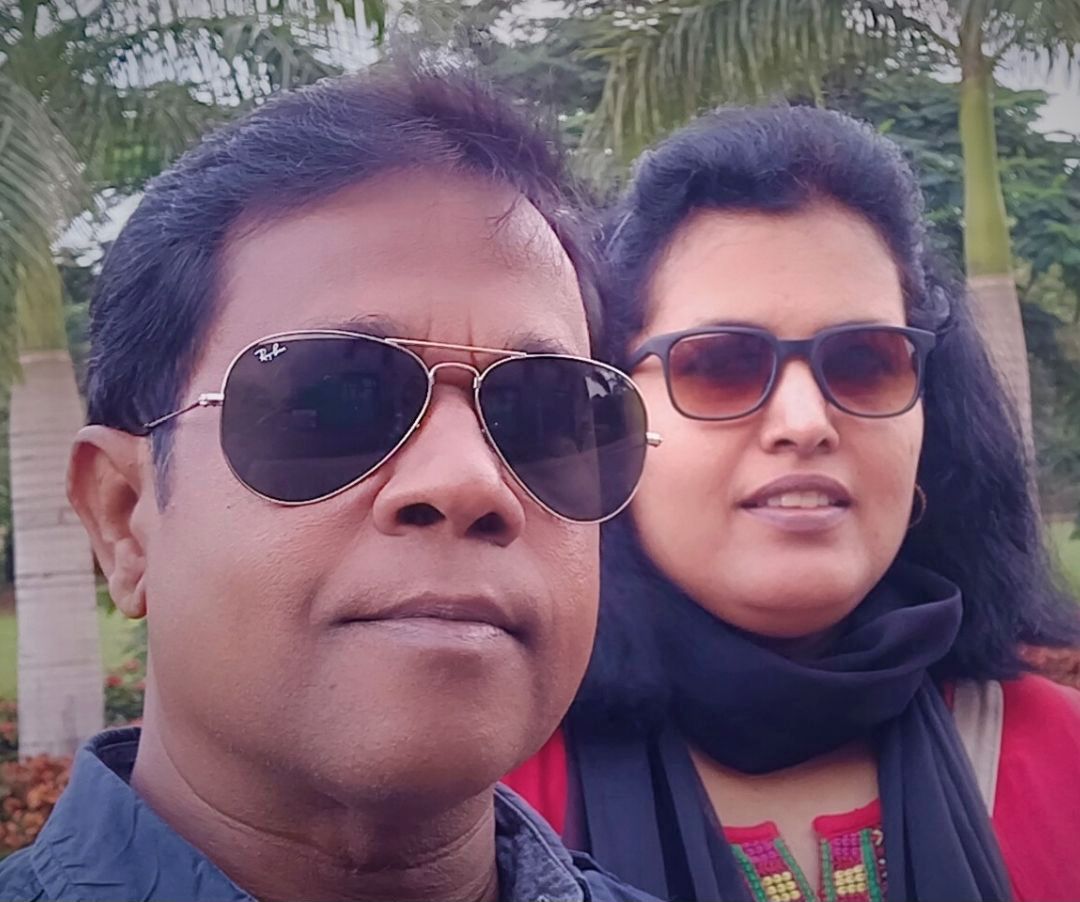
Sandy & Vyjay are a husband and wife duo who are travel content creators. They are co-founders of this travel website and are one of the leading travel content creators in India.
Sandy & Vyjay quit their successful corporate careers to pursue their passion for travel and writing full-time. Their dedication has earned them the “Best Travel Writer” award and numerous accolades on both national and international stages. Focusing on India’s destinations, heritage, and culture, they are passionate advocates for nature and the environment. Through their content, they promote ecotourism and sustainable travel, inspiring others to explore and preserve the beauty of India.
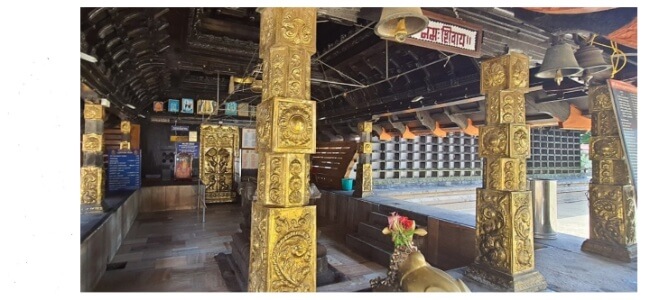
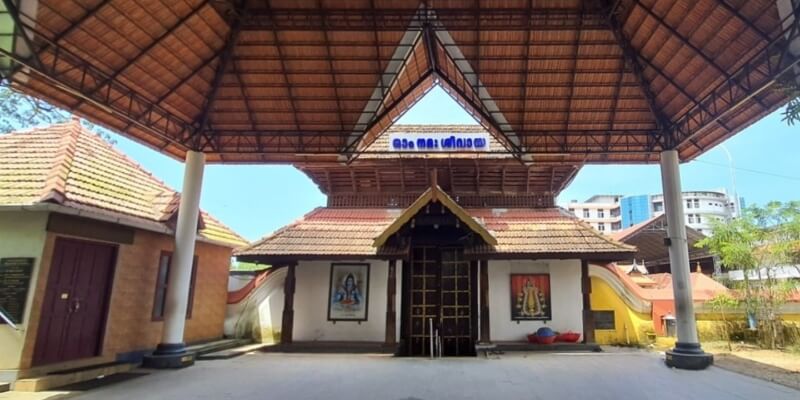
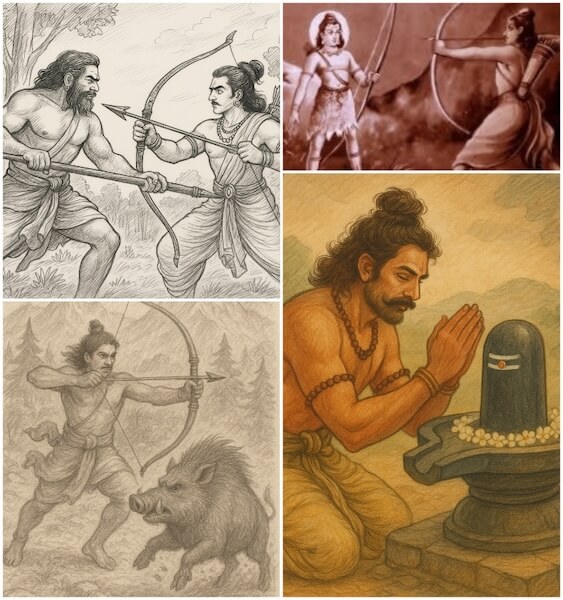
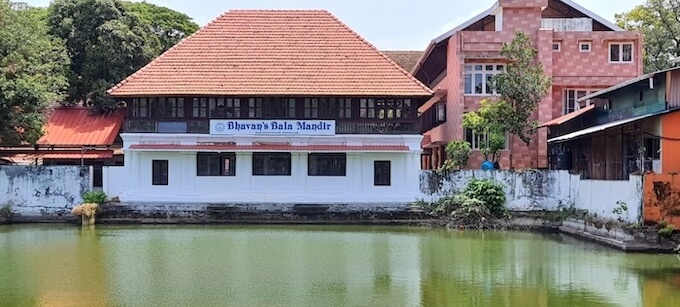
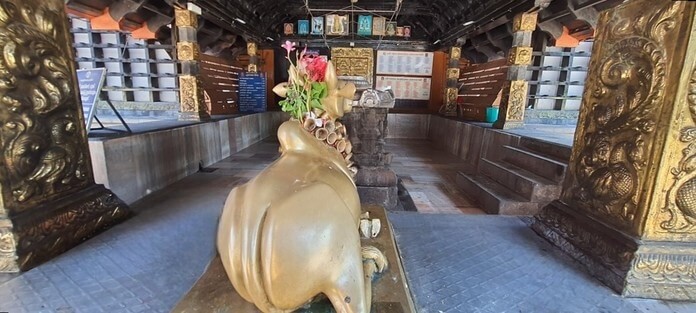
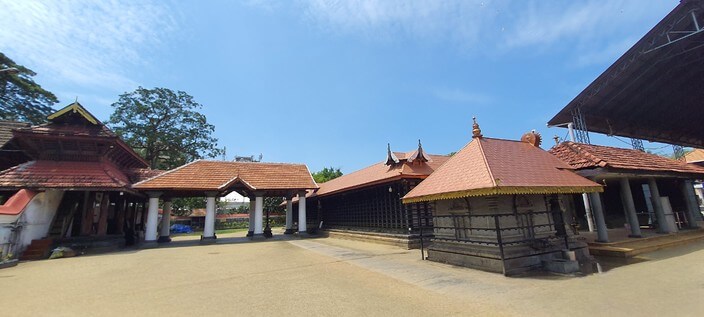
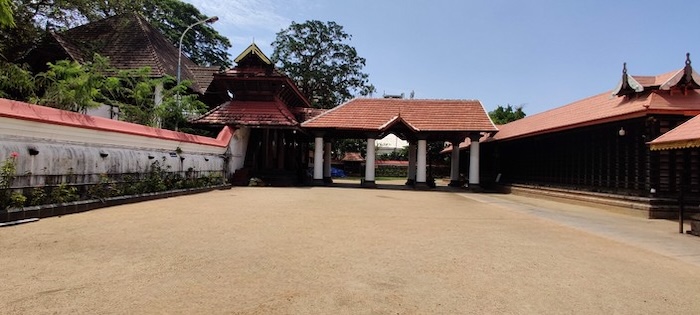
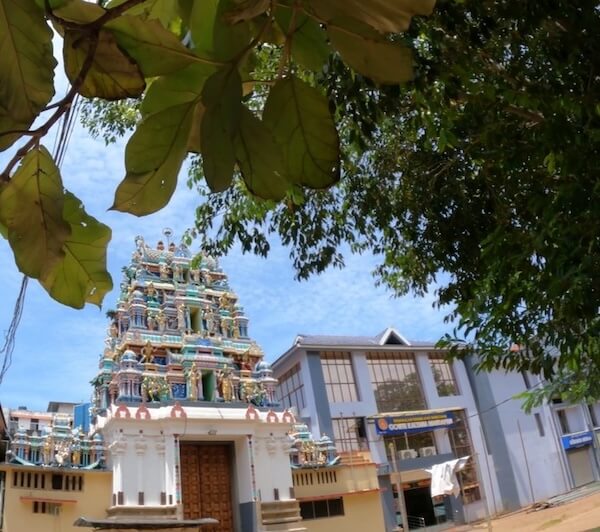
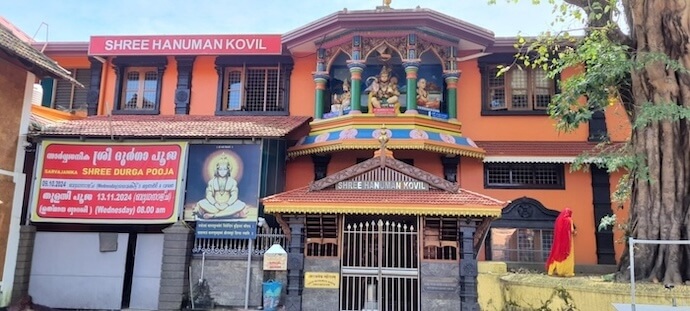
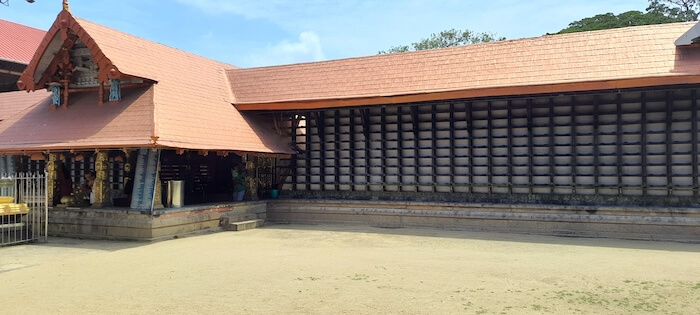
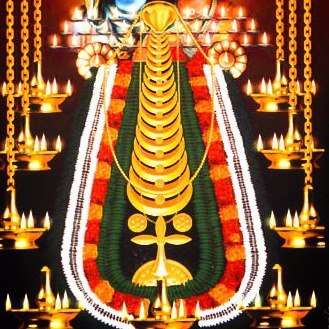

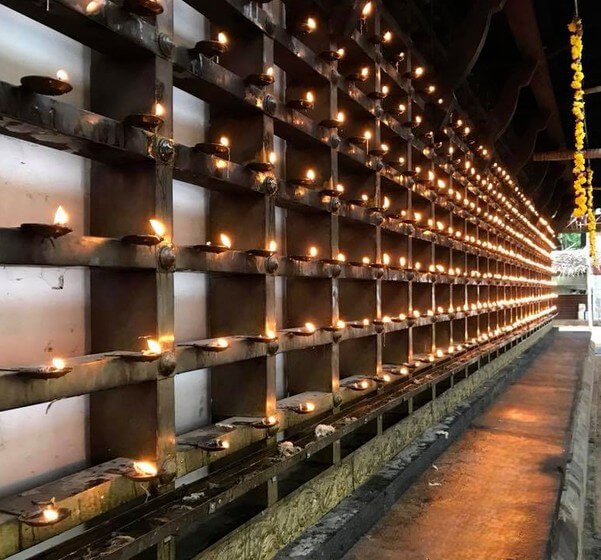

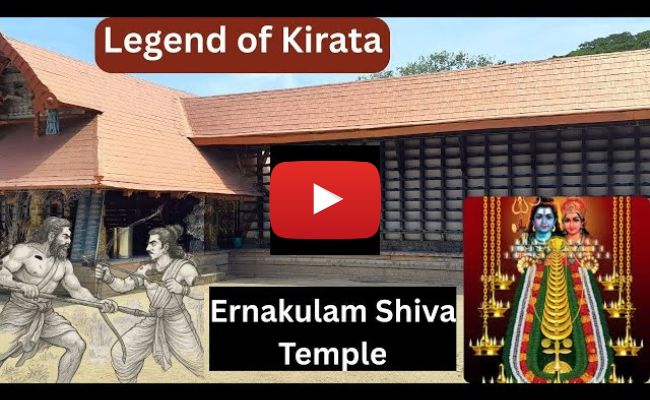

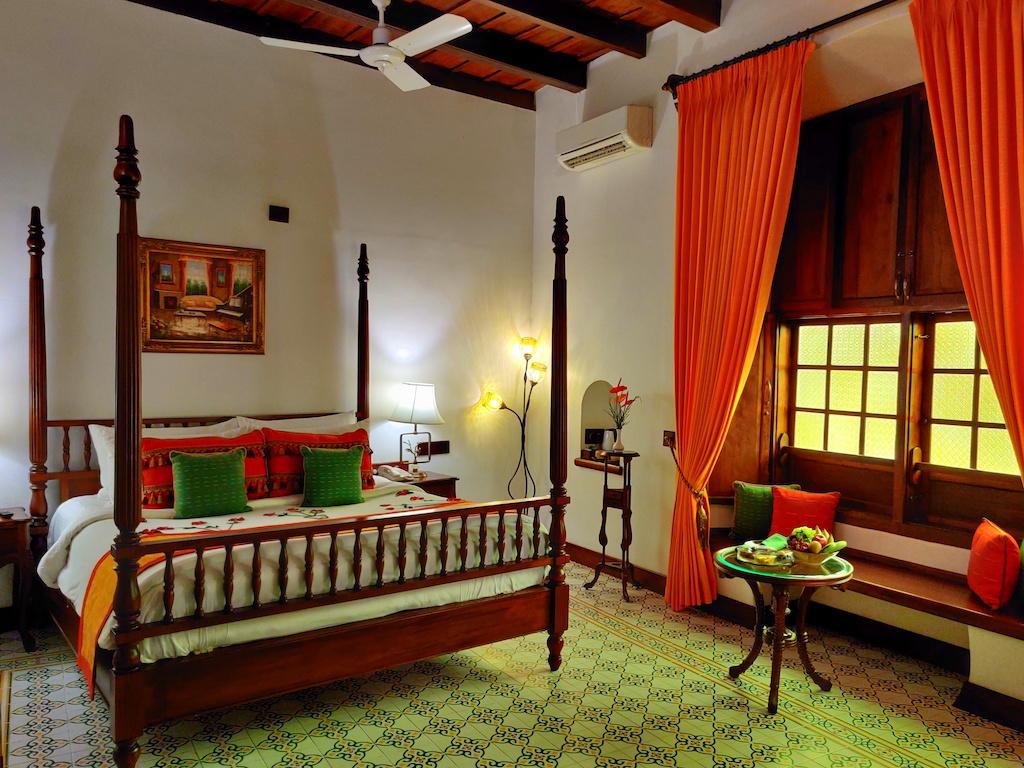

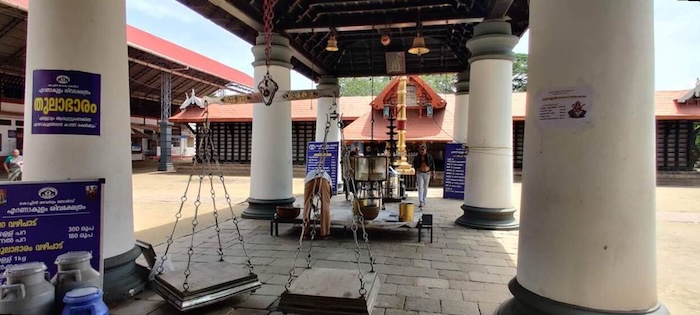




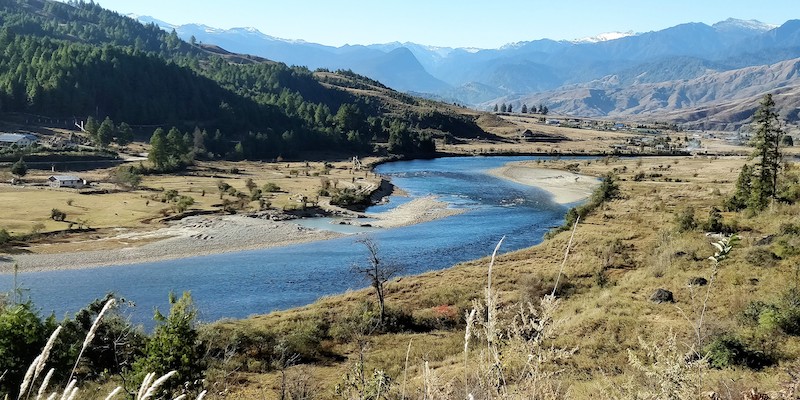
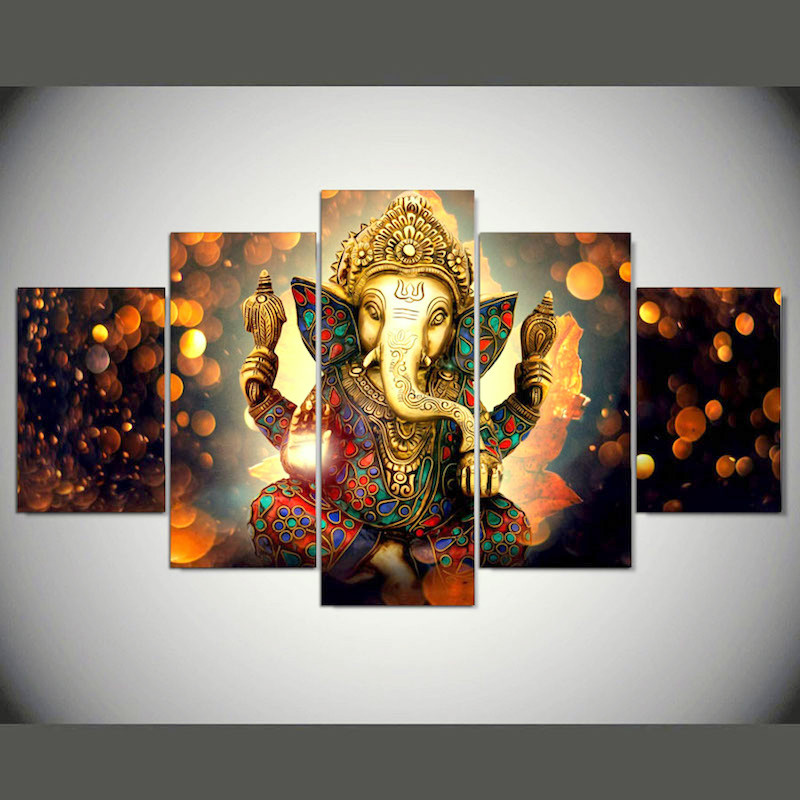

The architecture is a blend of traditional Kerala style and Dravidian style, making it a unique architectural masterpiece. The atmosphere looks as divine, serene and peaceful. It holds great religious significance among the devotees.
What a coincidence! We too visited the Ernakulam Shiva Temple this year. Lit with brass lamps in the evening, the temple looked magical in the flickering lights!
I am an ardent Shiva Bhakt. That’s why this post fascinated me even more! Although I am yet to visit Ernakulam! Love such detailed guides!
This place looks so serene. I am planning for the south trip , i would definitely check this out. Thanks for the hotel details . They look reasonable and great options to stay .